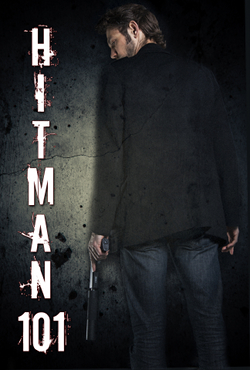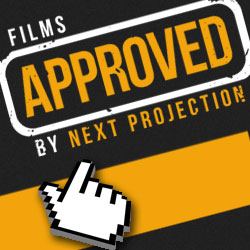Review: 4:44 Last Day on Earth (2011)
Cast: Willem Dafoe, Shanyn Leigh
Director: Abel Ferrara
Country: USA | Switzerland | Italy
Genre: Drama | Fantasy | Sci-Fi
Official Trailer: Here
Editor’s Note: 4:44 Last Day on Earth opened last weekend in very limited release in North American cinemas.
There seems these days a prevalence of apocalyptic films focusing not on the barren wasteland left after the world’s end, but the immediate lead-up to the grand finale. Particularly in the world of independent filmmaking, that notion—contrived in itself—of a “post”-apocalypse has been tossed aside in favour of exploring those precious last moments with the end impending. The latest addition to this apocryphal trend, 4:44 Last Day on Earth stars Willem Dafoe and Shanyn Leigh as a couple facing their final day together in a world where the ozone layer is set to finally dissipate in the early hours of the morning, destroying all traces of life.
Ferrara’s exploration of technology and faith as equal derivations and distractions from reality provides a fascinating subtext to his film which establishes it as a quintessentially modern work.
 Abel Ferrara is a hugely interesting director, albeit one whose name has resided in relative obscurity since his success in the early ‘90s with King of New York and the hard-hitting Bad Lieutenant. His are films which feel in-touch with social consciousness and attitudes, their subtextual examinations of pressing issues of their time clearly evidencing him as a director with his fingers on the collective social pulse. Look no further than his second feature, The Driller Killer, now looked upon courtesy of its frankly abysmal production value as little more than a crass and meritless inaugural “video nasty”, but in fact home to an incisive examination of homophobic self-repression in 1970s America. Ferrara is a director with an expert ability to seamlessly weave deeper meanings into apparently simple narratives, and 4:44 offers no exception.
Abel Ferrara is a hugely interesting director, albeit one whose name has resided in relative obscurity since his success in the early ‘90s with King of New York and the hard-hitting Bad Lieutenant. His are films which feel in-touch with social consciousness and attitudes, their subtextual examinations of pressing issues of their time clearly evidencing him as a director with his fingers on the collective social pulse. Look no further than his second feature, The Driller Killer, now looked upon courtesy of its frankly abysmal production value as little more than a crass and meritless inaugural “video nasty”, but in fact home to an incisive examination of homophobic self-repression in 1970s America. Ferrara is a director with an expert ability to seamlessly weave deeper meanings into apparently simple narratives, and 4:44 offers no exception.
There’s a key interplay at work in the film’s earliest scenes that sets up one of its most important themes, and with it Ferrara’s take on the America of today. The very first shot is of a table adorned with Buddhist paraphernalia, over which plays typically spiritual music. The second shot reveals an iPad as the source of the sound, contrary to our expectations. Ferrara’s exploration of technology and faith as equal derivations and distractions from reality provides a fascinating subtext to his film which establishes it as a quintessentially modern work. He uses these characters and their knowledge of their impending death to focus on the purest aspects of their life, and by proxy modern life in general, espousing his views on the key ways in which we can choose to live ours. The fact that the film’s overarching premise is revealed quietly in the background by television sets and internet videos is a telling one: the apocalypse here is little more than a means by which to examine fundamental aspects of humankind (a clumsy Dafoe voiceover later explains the situation clearly, an unfortunately expository but arguably necessary tactic).
It’s almost harrowing to see people so calm and collected as the end draws nearer, so casually accepting of their impending doom, but at the same time it robs the story of the sort of visceral mania that really enlivens the emotions and makes them felt by more than just the characters.
 Maybe the most interesting comparison that can be made to 4:44 is last year’s Perfect Sense, David McKenzie’s small-scale emotional apocalypse drama. Where McKenzie’s film stumbled into histrionics and an often deleteriously melodramatic tone, Ferrara’s is notably more restrained, more contemplative, more realistic perhaps. Here we follow characters who wander about not as panic-stricken animals, but quietly perplexed and solemnly clueless as to what to do. It is in this low-key register that Ferrara finds his success, but also his shortcomings. It’s almost harrowing to see people so calm and collected as the end draws nearer, so casually accepting of their impending doom, but at the same time it robs the story of the sort of visceral mania that really enlivens the emotions and makes them felt by more than just the characters. Dafoe is given a chance or two throughout to break loose and unleash the kind of wild performance he does so well, but like the film at large he’s too restrained, too removed. Ferrara is making a definite point about his view of humanity as irrelevant and fearful ants to the cosmos, but it’s hard to buy this level of passivity. There’s passion and there’s life, but there’s no sense of terror, and the aimless obsequience of the characters just leaves the film feeling aimless and obsequient too.
Maybe the most interesting comparison that can be made to 4:44 is last year’s Perfect Sense, David McKenzie’s small-scale emotional apocalypse drama. Where McKenzie’s film stumbled into histrionics and an often deleteriously melodramatic tone, Ferrara’s is notably more restrained, more contemplative, more realistic perhaps. Here we follow characters who wander about not as panic-stricken animals, but quietly perplexed and solemnly clueless as to what to do. It is in this low-key register that Ferrara finds his success, but also his shortcomings. It’s almost harrowing to see people so calm and collected as the end draws nearer, so casually accepting of their impending doom, but at the same time it robs the story of the sort of visceral mania that really enlivens the emotions and makes them felt by more than just the characters. Dafoe is given a chance or two throughout to break loose and unleash the kind of wild performance he does so well, but like the film at large he’s too restrained, too removed. Ferrara is making a definite point about his view of humanity as irrelevant and fearful ants to the cosmos, but it’s hard to buy this level of passivity. There’s passion and there’s life, but there’s no sense of terror, and the aimless obsequience of the characters just leaves the film feeling aimless and obsequient too.
Between exploring the role of technology in the modern world, examining Buddhist philosophies of all we see as a projection of a conscious mind, and presenting a scenario not wholly removed from our own foreseeable future, 4:44 Last Day on Earth offers a lot to think about, yet the deliberate sense of passivity actually works against the film to make it feel entirely irrelevant. With a touch more melodrama this could have been a great work of apocalyptic art; as it is it’s interesting, but little more.



















 Review: Josef Kilián (1963)
Review: Josef Kilián (1963) Subversive Saturday: The Gospel According to St. Matthew (1964)
Subversive Saturday: The Gospel According to St. Matthew (1964) Review: Habemus Papam (2011)
Review: Habemus Papam (2011) Review: Waiting for Summer (2012)
Review: Waiting for Summer (2012) Review: American Reunion (2012)
Review: American Reunion (2012)

